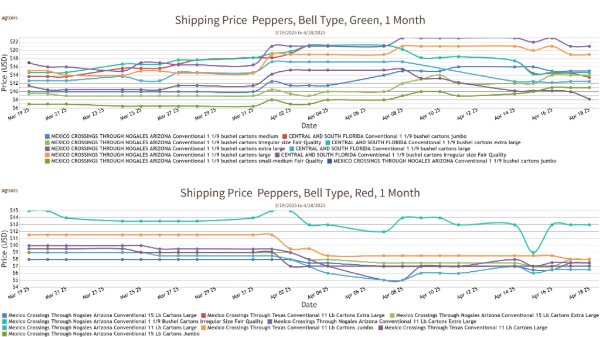Welcome to Blue Book!
Are you ready to join the thousands of companies who rely on Blue Book to drive smarter decisions? View our plans and get started today!
Still have questions? We’d love to show you what Blue Book can do for you. Drop us a line– we’ve been waiting for you.

“This last year, not only did the trees not go dormant due to unseasonably warm temperatures,” comments Craig Campbell of San Francisco-based CDS Distributing, Inc., “but we had rain at harvest. Perhaps growing cherries south of Tulare isn’t viable. This was 15 to 20 percent of the [usual] California crop.”
Rich Sambado of Primavera Marketing, Inc. in Linden also ponders if maybe growers are pushing the limits of cherries that can grow in the southern Central Valley. “Last year, there was no southern crop to speak of. There’s more acreage, but the yield has been inconsistent. Early May cherries used to be novel, now they’re a commodity. Water and labor costs per acre are up, but production is down—prices must be reasonable to move volume. High f.o.b. prices and low production are not the model for long-term success. Consumers and retailers clamor for high quality early, because of the price. A poor early crop can affect the whole season adversely.”
Other Challenges
Drought and warm winter temperatures are not the only challenges. Greg Costa of Felix Costa & Sons in Lodi looks at food safety, especially as it affects exports. “Chemical residues are a concern, though everyone in the cherry business does a good job of keeping those at a minimum. Another worry is invasive pest quarantines. Each export market has a range of protocols that must be met to satisfy various trading partners. The cherry industry works closely with the USDA to make them workable,” he says, adding, “The challenge with cherries is their short shelf life. Extremes in availability of the cherry crop have implications with labor, marketing, and capital investment.”
Many grower-shippers cite that construction on Highway 99 can hinder moving a crop that can ill-afford delays. As a major artery in the San Joaquin Valley, it runs through Stockton and Lodi’s high concentration of packers. Another wrinkle is the shortage of trucks due to tighter emission controls from the California Air Resources Board, or CARB. “New California regulations require that diesel trucks be retrofitted to reduce emissions,” Reiman points out. “As a result, many trucks won’t haul in California.”
Weather is always at the top of growers’ minds, but the spotted wing drosophila has not been far behind. Mike Jameson of Morada Produce Company, LP in Linden observes, “The industry as a whole has been good about combating this problem, so it has not turned into a significant issue.”
Campbell at CDS agrees: “Spotted wing drosophila impacts all growers, but it’s under control.” This may be true, but Primavera’s Sambado stresses, “Growers have to spray more to combat pests, which adds to the per acre cost of growing cherries.”








